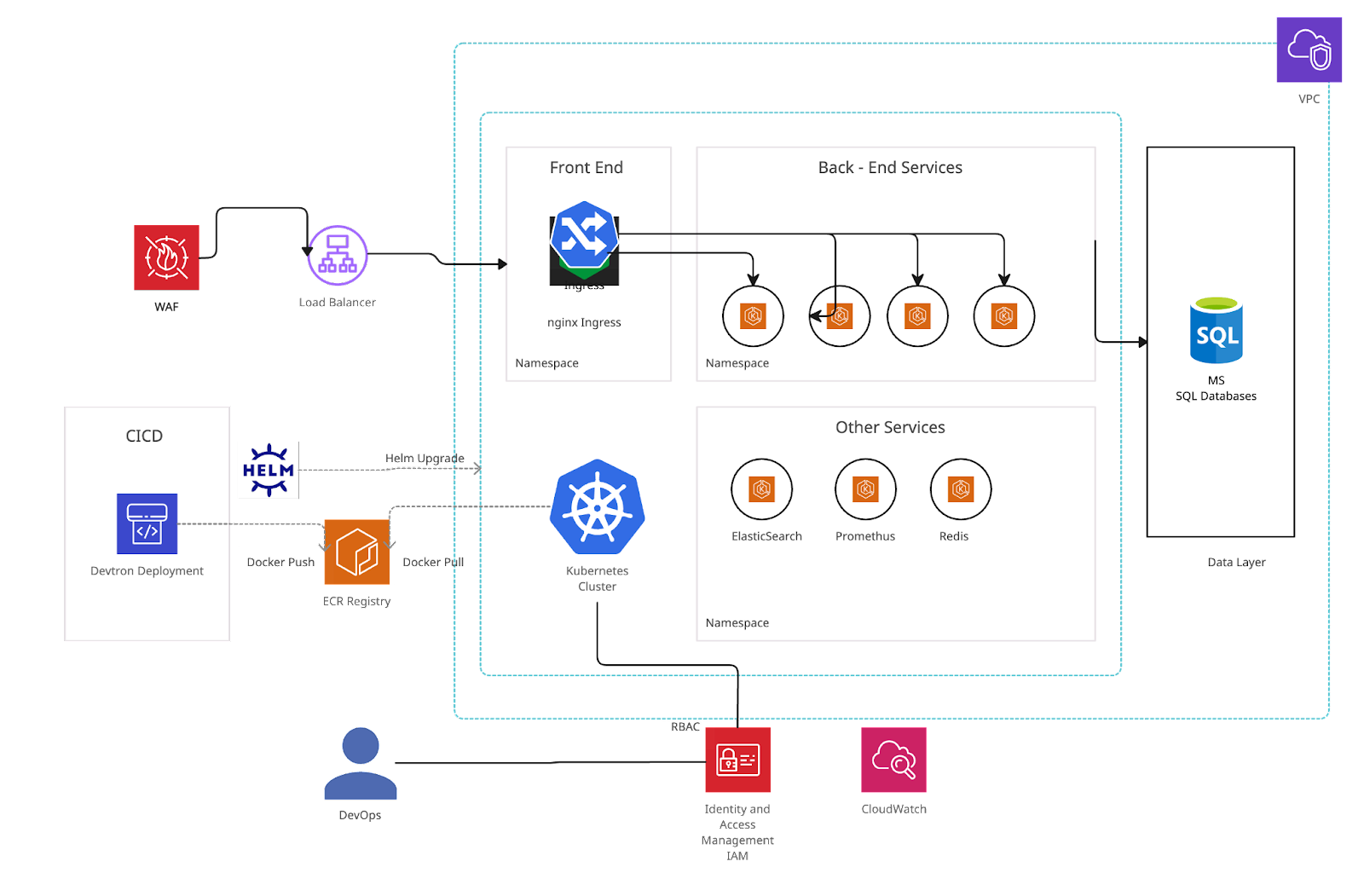Giift Loyalty Business Management System on AWS EKS
How GIIFT uses EKS in AWS Cloud
Giift offers end-to-end Loyalty Program Management System (LBMS) which is aimed at acquiring new customers, building lasting relationships and strengthening brand loyalty.
Giift’s LBMS which is Points accrual and customer management system provides complete product-agnostic platform giving advanced capabilities to the issuers. It has an advanced user engagement portal with full self-service management at a global level. It provides benefits like customer acquisition, customer engagement, brand value increase, automated customer retention, build customer base, provide lifetime value, analyze customer data. etc.
THE CLIENT’S CHALLENGE
The client’s current infrastructure was built on legacy systems using on premises technology. Scaling applications was also challenging due to fixed infrastructure. The client was looking to modernize their application and also support a cloud platform like AWS to host their application with high availability and scalability.
ARCHITECTURE

EKS Deployment
We need multiple EKS clusters based on the environment in EKS. We are using IAAC (Infrastructure as code) using Terraform to deploy the EKS cluster.
Once the requirement was identified, we analyzed all the apps which can be containerized. The Techpartner team along with the Giift application development team created Docker files for all the apps. Once the build process was in place, using Dockerfile, all the application images were built and pushed to ECR.
For the deployment of the containerized apps, EKS Cluster and other AWS resources were created in an automated way using Terraform. The Terraform files are kept in a repo and used to spawn the infrastructure. All the subsequent changes are also managed by Terraform.
We are using Terraform for IAAC for deploying the EKS cluster, the EC2 instances, creating managed nodegroups, EKS addons, Security Groups, IAM roles required for EKS cluster, updating AWS-auth configuration. Terraform also added required tags like service which is used as cost allocation tag.
Once the EKS cluster was up and running, the EKS cluster is connected to the CI/CD system which is Devtron and hosted in another region and account. For this reason, EKS cluster is kept public and private and public IPs (NAT IP) were whitelisted.
INSIGHT TO ACTION
The TECHPARTNER team worked with the Giift’s LBMS management team and tech leads to understand the project needs. Together we chalked down the plan and finalized the setup. Our focus was to leverage AWS services and utilize the open source tools to achieve the required output.
- Create Dockerfile for all the apps
- Organized apps as per the criticality and workload for different nodegroups
- Create EKS cluster with planned managed nodegroups.
- Deploy apps for the EKS cluster
BENEFITS
- With the EKS Implementation, Giift was quickly able to modernize their application from the legacy system
- Managed EKS platform provided a quick start for the containerization journey; also provided Scaling and High availability
- The infrastructure was compliant to the standards and certifications
- With EKS, we did automate many of the operational tasks associated with managing a Kubernetes cluster, such as patching, upgrading, and scaling. This helped to save cost by reducing the amount of time and effort required to manage the cluster
AWS STACK



